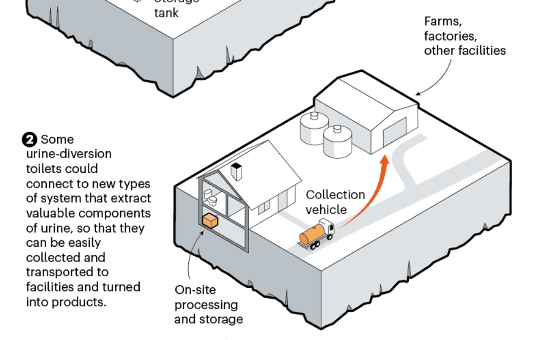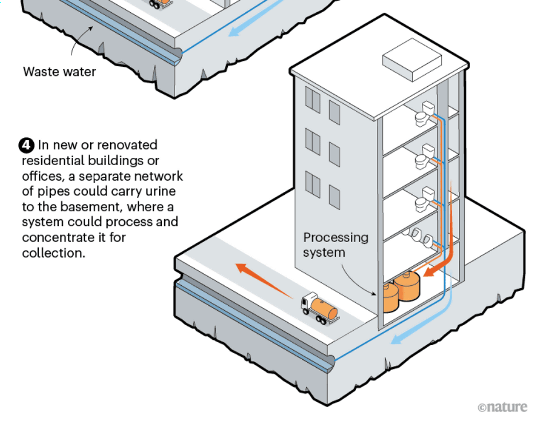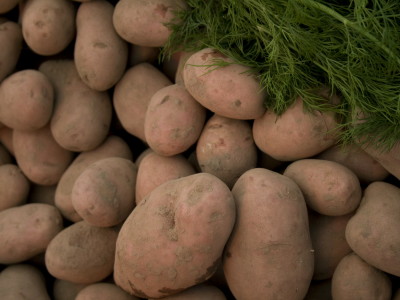What is the reason for the growing expectation that 'recycling pee will save the world'?

Humans urinate on a daily basis, but the consumption of freshwater by using flush toilets to flush urine is quite high, and improper treatment of sewage also leads to environmental pollution. Therefore, researchers in each country who think that 'recycling urine saves the world' are conducting research to recycle urine in a way that is useful to humans.
The urine revolution: how recycling pee could help to save the world
On Gotland, Sweden's largest island, freshwater shortages are a problem, and at the same time, pollution of the surrounding waters due to drainage from agriculture and sewerage systems is also a problem. 'Urine recycling' is expected as a means to solve these problems.
Since 2021, researchers from the Swedish University of Agricultural Sciences have partnered with Sanitation360, a startup on Gotland Island, to deploy a special water-free toilet during the summer tourist season. In this experiment, the goal was to collect more than 70,000 liters of urine in three years using a special toilet, and the collected urine was dried and pelletized using a process developed by Sanitation 360. It is said that the molded product will be used as fertilizer by local farmers who grow barley.
The image below compares the growth of barley cultivated with conventional fertilizer (left), barley cultivated without fertilizer (middle), and barley cultivated with recycled urine fertilizer (right). You can see that barley with fertilizer made from urine grows larger than barley without fertilizer. 'Our ambition is to do this for everyone, all over the world,' said Prithvi Simha, Chief Technology Officer of Sanitation 360.

by Jenna Senecal
Not only Sanitation360 is trying to recycle urine (urine diversion), but groups from all over the world such as the United States, Australia, Switzerland, Ethiopia, and South Africa are researching this technology. A device that separates urine from the sewage treatment system has already been used in parts of Oregon and the Netherlands, and in the 14th arrondissement of Paris, a urine diversion toilet will be installed in a large-scale house. The European Space Agency (ESA) also plans to install 80 urine diversion toilets at its Paris headquarters, which can be installed in various locations such as temporary military bases, refugee camps, and city centers. It is said that.
Scientists are paying so much attention to urine diversion because urine is rich in nutrients such as nitrogen and phosphorus and is likely to be used as fertilizer. Simha estimates that humans are excreting enough urine to replace a quarter of modern nitrogen and phosphorus fertilizers, saving huge amounts of freshwater by collecting them without draining them into water pipes. However, it is possible to reduce the burden on the drainage system.
Several methods have been devised to recycle urine into fertilizer. The first is to 'store urine until the pathogen dies and then spray it directly on the soil.' This is an easy method mainly for farmers in low-income areas.

by nature
In addition, by equipping the urine diversion toilet itself with a 'system that extracts useful components from urine,' a method for collecting and transporting only the necessary components from each household ...

by nature
There is also a way to equip the urine diversion toilet with a device that collects only dry urine.

by nature
A method has also been devised to equip the entire building with a tank that collects only dry urine.

by nature
In a
Early urine diversion toilets developed from the 1990s to the 2000s were psychologically acceptable to consumers because of the existence of small vessels for storing urine and the concern about odor. I could not do it.
In Durban , South Africa, the government promoted the installation of 'dry toilets' that do not use water as a result of the problem that 'many people do not use toilets' during the 2000-2002 cholera epidemic. rice field. However, even here, although people thought that it was better than having no toilet, most of the residents said that they wanted to use the flush toilet used by the wealthy if they could afford it.
Meanwhile, Austrian design company EOOS subtly separates 'the place where the user pour urine' and 'the place where the water for washing urine flows', and uses the teapot effect that the liquid travels on the surface to urinate. Developed a separate toilet design. This toilet, which retains the advantage of a conventional flush toilet that flushes the toilet with urine with water, does not bother the odor that is often found in urine diversion toilets. In Durban, he is also collaborating with KwaZulu-Natal University to test 'a toilet that separates urine and flushes stool', and hopes that this toilet will be accepted by the wealthy, KwaZulu-Natal University hygiene. Scholar Anthony Odiri said.

Also, in order to promote urine diversion, it is necessary not only to separate the urine in the toilet but also to make the urine usable as fertilizer. Rural areas, where pathogens are easy to store until death and spread to agricultural land, are relatively easy, but in urban areas where a lot of urine is excreted, transportation and storage costs are a problem. Since 95% of urine is water, researchers are developing technologies to dry the collected urine and extract nutrients in individual toilets and buildings.
The problem with extracting nutrients from urine is that '
In addition to fertilizer, urine utilization methods such as ' generating electricity using urine in microbial fuel cells ' and ' making bricks using urine ' have been devised, and ESA has 'used urine from astronauts. ' We are considering the possibility of using it as a building material for lunar bases . Although there are various barriers to deploying a urine diversion system, many researchers argue that it is still worth implementing.

Related Posts:
in Science, Posted by log1h_ik







